Dynamic Keyword Insertion Google Ads
Want to increase your click-through-rates by up to 50%? What about serving highly personalized ads without having to create hundreds of ad variations?
We've got the inside scoop and you won't believe how easy it is.
You've heard about SKAGS and Keyword Tapering, but have you heard about Dynamic Keyword Insertion?
No? Don't worry, we've got you covered.
Let's jump right in.
Jump to:
- What is Dynamic Keyword Insertion?
- How Does Dynamic Keyword Insertion Work?
- What Are the Benefits of Dynamic Keyword Insertion?
- The Warnings of DKI & When Not To Use Them
- How To Set up Dynamic Keyword Insertion
- 6 Tips to Get the Most out of Dynamic Keyword Insertion
- DKI for Landing Pages
- Wrap Up on Dynamic Keyword Insertion
What is Dynamic Keyword Insertion?
It's an advanced ads feature offered by both Google and Bing that dynamically (constantly changing) updates your ad text to include one of your keywords that matches a customer's search terms.
"Keyword insertion lets you automatically update your ads with the keywords in your ad group that caused your ads to show. This can help make your ads more relevant to users searching for what you offer."
In simpler terms, dynamic keyword insertion will allow you to customize your ad copy based on the search terms that someone might be searching with aka queries.
How Does Dynamic Keyword Insertion Work?
To use DKI you need to insert a special piece of code into your text ads.
An example would be, say you're running a campaign to advertise your athletic goods store and you have an ad group that promotes your sneakers and shoes. The snippet of code that you'll insert in your ad text might look like the following: {KeyWord: Sneakers}. Doing this means that when a keyword can't be inserted in your ad, we'll insert Sneakers instead.
Then, when a customer uses one of your keywords in their search, your ads will automatically replace the code with the keyword (Sneakers) that triggered your ad in the first place.
What is cool is that it allows you to have ads appear differently to different customers depending on what they are searching, without you having to create multiple ads with different keywords.
What Are the Benefits of Dynamic Keyword Insertion?
Dynamic keyword insertion is especially convenient and can be important to use in businesses where there's a large inventory of the same item (e.g. eCommerce stores). It will allow that business to market that item without having to create numerous ad groups, thus saving time, money, and energy.
1. Higher Relevancy Score
So, you're thinking of ordering a cheese pizza. And when you type in "cheese pizza," Papa John's shows their ad with "cheese pizza" clearly in the Headline 1. This makes the ad super relevant to the person searching, and will most likely result in a click-through.

2. Higher CTRs
When a search term matches the wording in the ad copy, Google will bold those words which make them standout. Because they stand out, it's more likely that they will be clicked on more, resulting in a higher CTR (click-through rate).

3. Higher Quality Score
Increasing quality score is something that's always on the mind of advertisers and marketers. As a marketer, this is something that we're constantly asked about by our clients. With higher quality scores, it can help the account with lower cost per clicks(CPCs), better position averages in searches, and a lower cost per acquisition(CPA).
The best way to increase your quality score is to focus on creating a relevant ad. With DKIs, this is a great and quick way to ensure your ads are relevant to what the user is searching for.
4. Potential to Increase Character Limitations
I don't know about you, but when I hit the exact number of characters that I'm allowed in an ad's field, I do a little mini dance at my desk. It's exhilarating (nerd alert). However, when you have the perfect headline to use and it doesn't fit, it can be one of the most frustrating situations in paid search.
DKI gives us a bit of a wiggle room here. While it's not a guarantee for every DKI, if Google allows it, your headline can actually be longer than the character limit will allow. This gives you that headline that you always wanted but maybe couldn't have had.
5. DKI Saves You Time and Is Easy to Implement
One of the best things you can give to a marketer is time. With more time, instead of building out ad after ad for each individual search term coming through, DKIs pretty much does the work for you.
In the case of accounts like an e-commerce one with lots of inventory, it might not be practical to build out numerous ads and ad groups. Especially, if you have search terms coming through that can use the same description for each, this just makes it a bit easier and gives you more time to focus on bigger and better things.
The Warnings of DKI & When Not To Use Them
Because DKIs are a pretty advanced feature, you don't just want to use it freely across any campaign and ad group. It's best to be safe and not sorry in this situation.
- Competitor Keyword Targeting
There are some industries where it may be illegal to use a competitor's name in your ad. Sure, you can bid on their keywords, but adding their name is a big no-no and can get you in trouble with Google's trademark policy. So, ad groups that have competitor names as keywords, don't use DKI.

- Proofreading & Misspellings
With DKI, you'll be inserting keywords into phrases, and you have to be careful and make sure that the ad makes sense. For example, say you're using the DKI that we showed earlier:
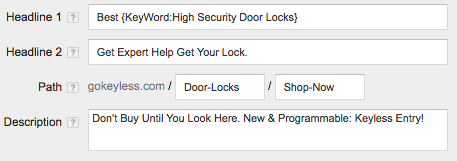
Now, say there's a keyword in this ad group that is "security high lock". The phrase "Best Security High Lock" won't make sense. With testing your results, you can avoid headaches and embarrassments like these.
Another part of proofreading is making sure that your DKI code is entered in correctly. Extra spaces, incorrect use of capitalization, or using parentheses instead of brackets can all make your ad look amateurish.
Ugh…I think we've all been there where we caught a misspelling in one of our ads, or even worse when the client does. We can avoid this by making sure that we're not targeting misspelled keywords. Sure, the visitor typed it in, but we're smarter than that.
- Plurals/Singulars
This also applies to plural and singular versions of your keywords. It's a good idea to have both types of keywords targeted, but making sure that it makes sense in your ad copy is important. A get-around for this is to separate the plural and singular keywords into separate ad groups.
- One-Word Headlines
Google is generous and has given us 30 characters to use in a single headline. Not taking advantage of it can make your ad look like spam and boring. So, you want to make sure to avoid one-word headlines, by avoiding one-word keywords in your dynamic keyword insertion.
- Don't Use for Broad Match Keywords
The point of using dynamic keyword insertion is to make the ad copy more relevant for the person searching and closely matches the search term that they're using. With broad match keywords, there's a high likelihood that it can come through your DKI ad and make the ad look confusing and irrelevant.
How To Set up Dynamic Keyword Insertion
There are two ways to set up Dynamic Keyword Insertion in your ad copy, the manual method and the guided method. Below we explain how to use both.
Guided Method
Manual Method
- When you're entering ad text, insert {keyword:default text} where you want a keyword to appear. Replace "default text" with the word or words you want to appear when the text can't be replaced by a keyword.
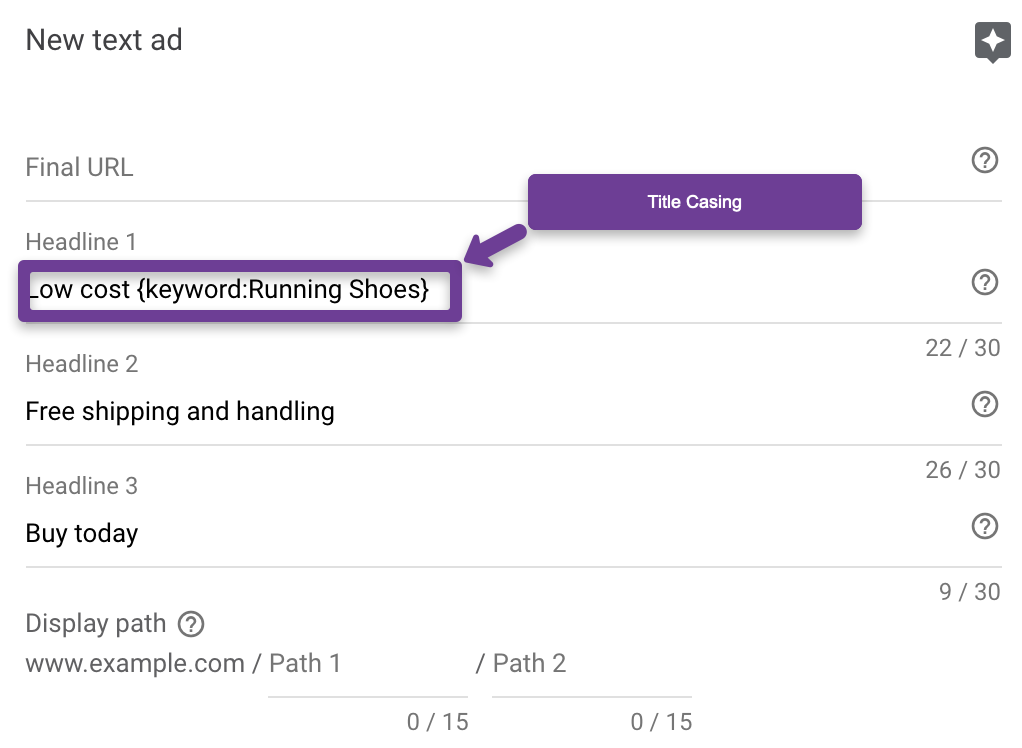
- Capitalize keyword depending on how you want your keyword text to be capitalized.
- To keep your keyword lowercase, use keyword. For example, "dark chocolate."
- For sentence capitalization, use Keyword. For example, "Dark chocolate."
- For title capitalization, use KeyWord. For example, "Dark Chocolate."
- For all caps and then title capitalization, use KEYWord. For example, "USA Chocolate."
- For title capitalization and then all caps, use KeyWORD. For example, "Chocolate Made In USA"

- Make sure your default text is short enough to keep your ad within the character limits.

- Avoid special characters (like "é") in the display or landing page URL.
- Save your ad as usual.
What It Looks Like In Google Ads
Have you ever gone into an AdWords account, looked at the ads and seen the brackets in the headline of the ad and thought, "what the heck is this?" I know I have, and that's when I came to understand DKIs.
A bit of an explanation about those brackets in DKI: this is where the keyword is displayed, assuming it fits in the character allotment. The "keyword" term in the brackets is important when it comes to defining the case that you want the keyword to be in: title case, sentence case, or lower case.
{KeyWord: high security door locks} – High Security Door Locks
{Keyword: high security door locks} – High security door locks
{keyword: high security door locks} – high security door locks
So, depending on the placement of the keyword in the headline will determine the case that you'll use for the keyword.
In our example above for Headline 1, we have the keyword "High Security Door Locks", which is the default text. What this means is that if the keyword that gets switched out in the brackets doesn't fit, this default text will show instead.
6 Tips to Get the Most out of Dynamic Keyword Insertion
DKI is an incredible option for making your ads really speak to the individual. When it comes to setting them up, it is important to make sure that you are getting the most out of them. Here we will give you 6 tips to make them the best possible.
- DKIs Aren't Limited to Headlines
The headline is the most commonplace to use DKIs, but that doesn't mean it has to only happen there. The headline makes sense to have DKIs, because a best practice is to have the search term show there. According to Google, the headline text is the text that's most likely to be noticed, so that's why we'd recommend putting the DKI there.
However, if it makes sense, you can include DKIs in the other headline, the path, or the description text of the copy. Word of caution: make sure that it makes sense in the description. There are a lot more characters here and a higher chance of having a grammatical error occur.
- Consistency Is Key
One of the best practices that we have at KlientBoost is writing the headline in title case. So, it would be a stupid move on my part to have a dynamic keyword insertion and not choose title case for the text. It will make my ad harder to read and a bit amateurish if it were to look like this:

- Watch Your Capitalization
One thing to keep in mind as well is that Google has strict guidelines on what types of capitalization is approved. While using capitalization like "FYI" might be approved by Google, words like "FREE" or "PIZZA" most likely will be flagged by Google and disapproved.
- Keep Your Ad Groups Tight
So, you're using dynamic keyword insertion to make your ads more relevant, and to add another layer of relevancy onto this is to make sure that the keywords in your ad group are relevant. For example, you might have "cheese pizza", "pepperoni pizza", and "vegetarian pizza" in an ad group–but having "antipasto" might not make sense here unless your description is super generic and can cover all those choices.
By making sure that your ad groups are tight, and keywords are similar, you'll have your relevant ads.
- Keep Your Default Text Short
Because some search terms coming through your ad group might be a bit longer, you'll want to ensure that your default text is kept short. Sure, there are times that Google will expand across the allotted character limits like we talked about earlier, but don't rely on it.
For example, if your text talks about "the best pizza", a search term like "cheese pizza" will fit okay. But if your default text is "San Juan Capistrano's Best Pizza", and someone searches with cheese, you might miss out on having that search term included in your text. Don't fret, your default text will show, but the point of the DKI is to have the search term be added, so think about that.
- DKI Isn't For Every Ad.
A great example of this is bidding on competitors' branded terms – Whole Foods wouldn't want the brand name "Sprouts" showing up in its ads because of DKI. So keep it to non-branded terms that are relevant to your business.
DKI for Landing Pages
Dynamic keyword insertion isn't limited to only in PPC channels like AdWords and Microsoft Ads In fact, DKI is useful when it comes to landing pages. While DKIs in ads are meant to help performance for CTR and quality score, it's not the final step in helping convert those clicks.
To help convert leads, having a landing page that matches the ad copy will perform better than a page that doesn't have anything to do with what the visitor saw in the ad. See how this blog talks more about message match.
For example, we have a client, AskNicely, whose business is to promote a software which collects and acts on real-time customer feedback, or Net Promoter Score (NPS). Because the software can be defined as NPS Software, or a Customer Service Software, or even Customer Survey Tool, instead of creating multiple landing pages to match these different keywords, we can instead insert a DKI.
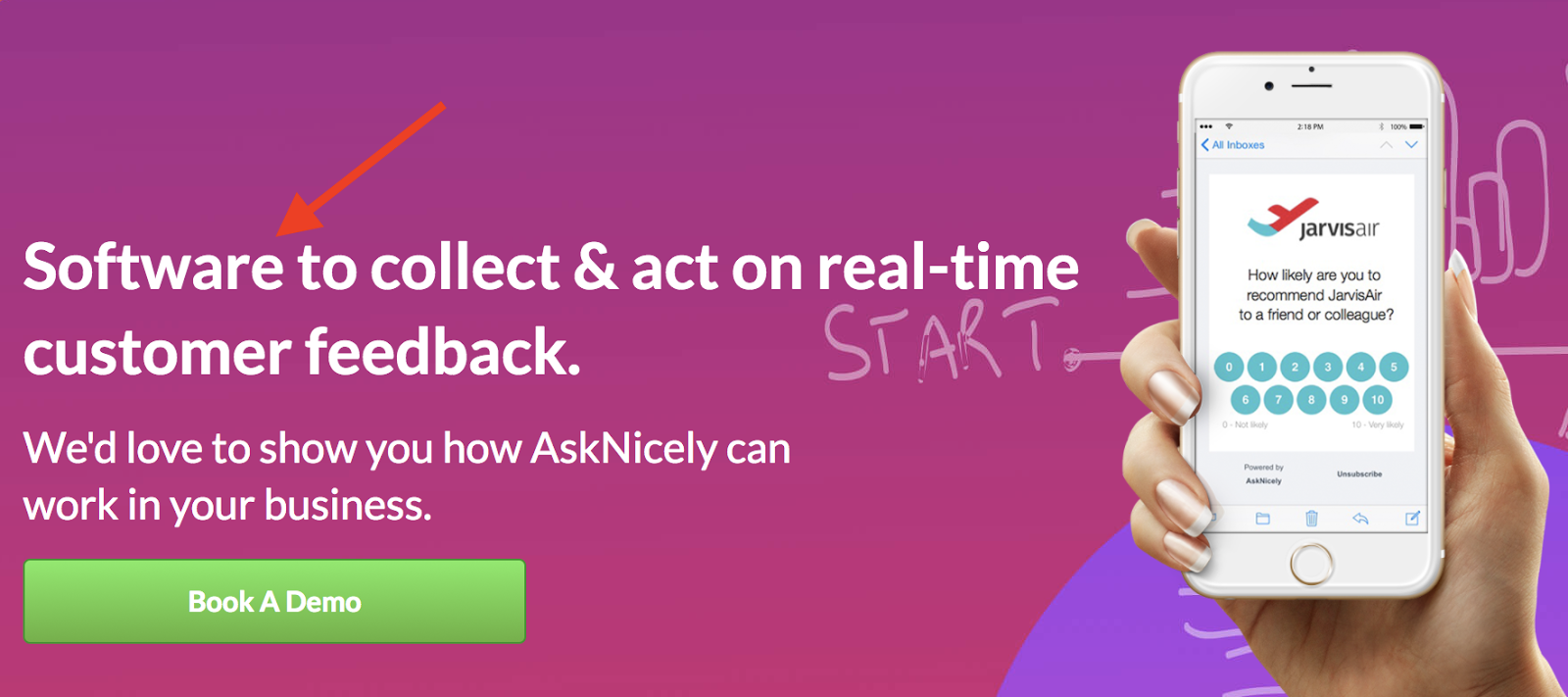
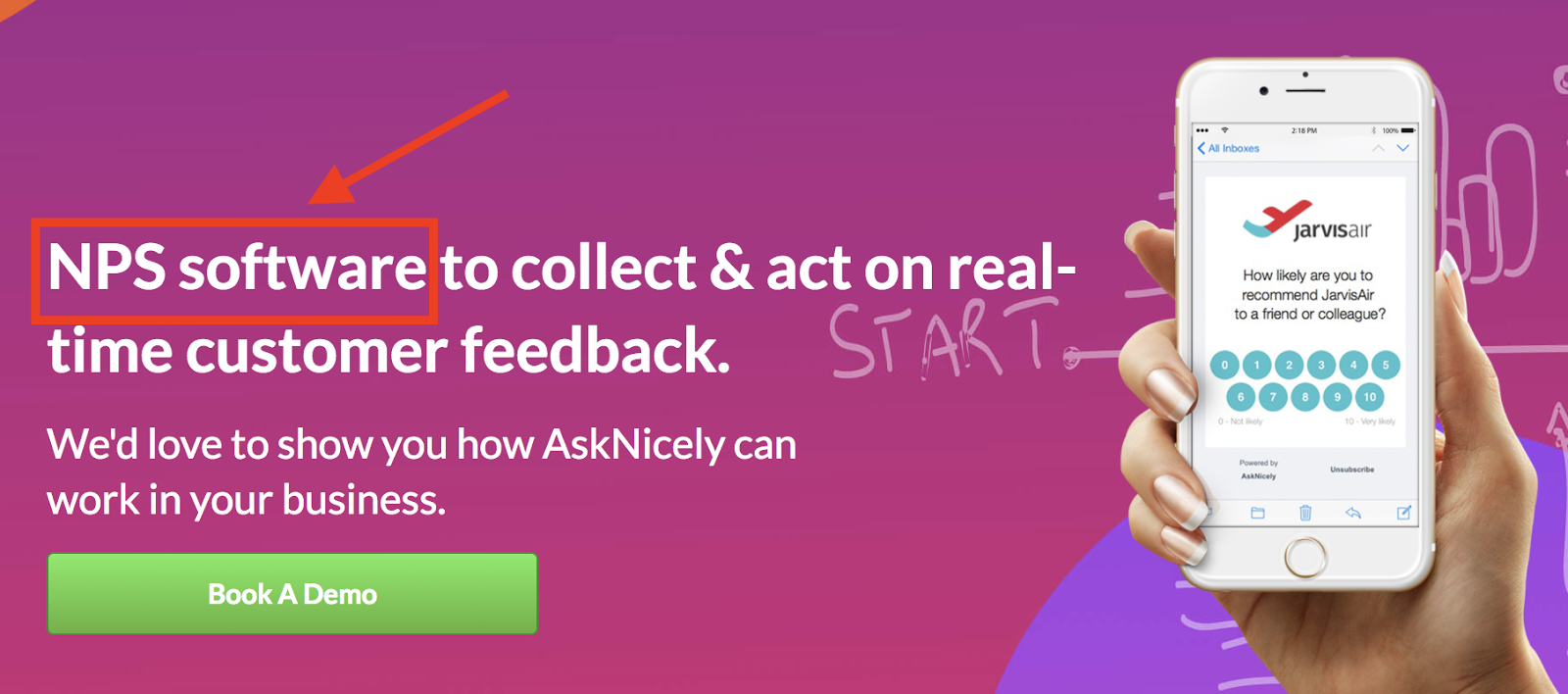
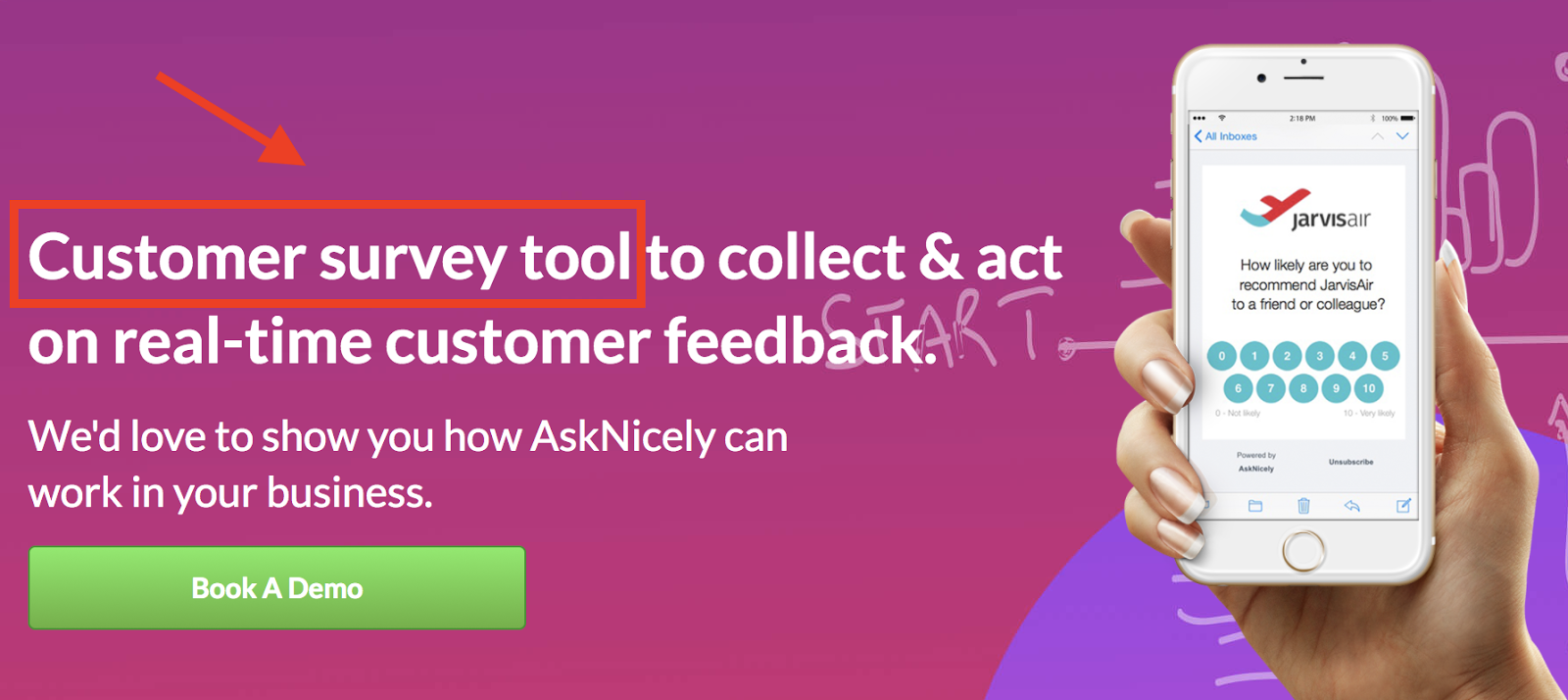
All this is great, but is there the data to back up that DKIs work? Here's a look at a campaign where we have it filtered to show only ads that contain "kw" in the final url which indicates the page was a dynamic keyword insertion. As you can see in the screenshot below, compared to the rest of the ads in this specific campaign, CPA is almost $100 less, and conversion rate from 4.17% to a 7.67%.

Wrap Up on Dynamic Keyword Insertion
While knowing the concept of dynamic keyword insertion is important, it's also important to note that when creating a campaign using single keyword ad groups (SKAGs), DKIs might not really be necessary.
DKIs may become relevant when an account has used them before and you're optimizing the account, you'll understand the feature. Like I mentioned earlier, it can also be used for campaigns that have a heavy inventory, and creating SKAGs might not be realistic.
However you choose to build your campaigns, though, I will stress the importance of making sure your keyword or search term is showing in the ad.
Dynamic Keyword Insertion Google Ads
Source: https://klientboost.com/google/dynamic-keyword-insertion/
Posted by: scottareamithat.blogspot.com

0 Response to "Dynamic Keyword Insertion Google Ads"
Post a Comment